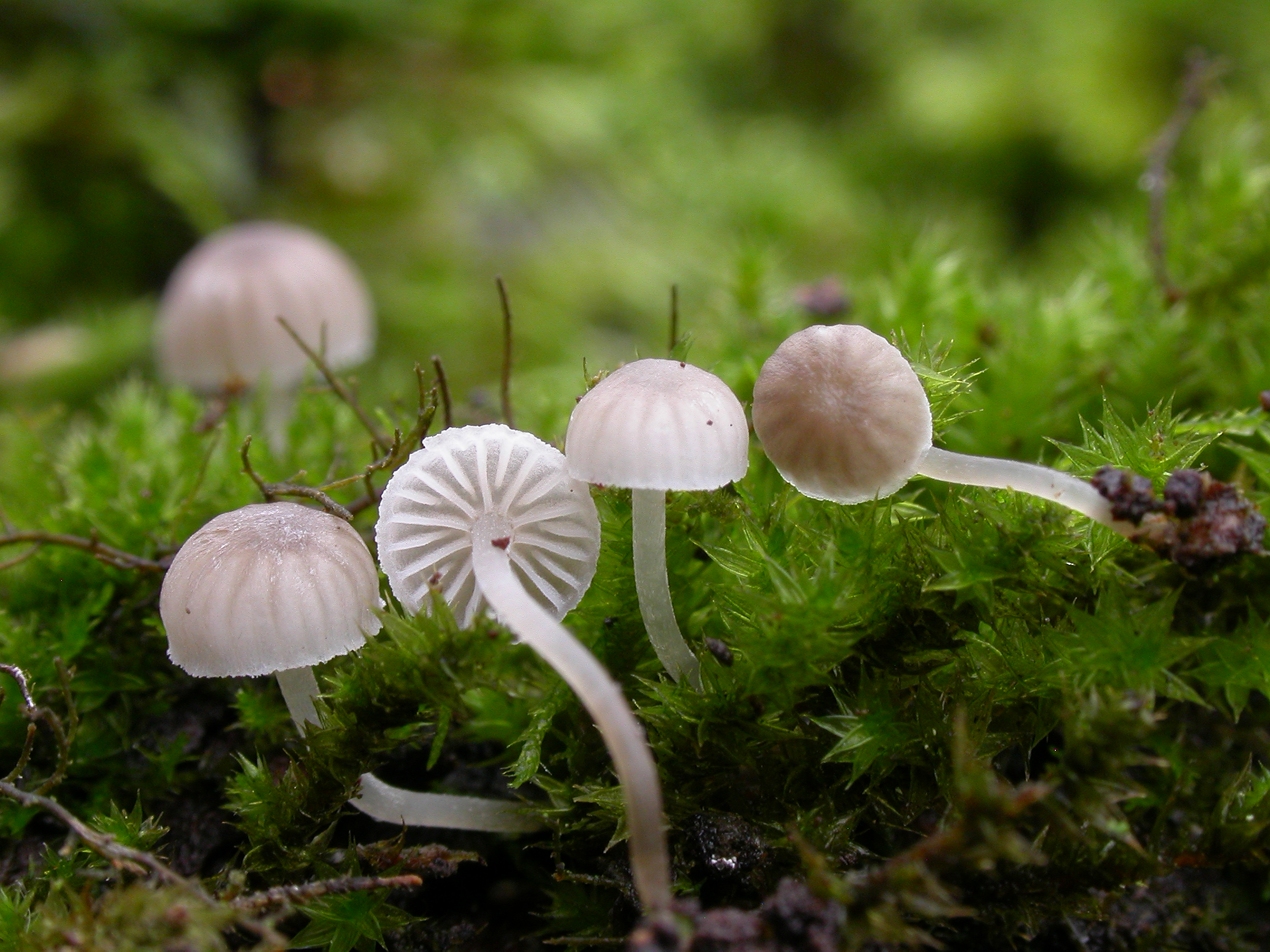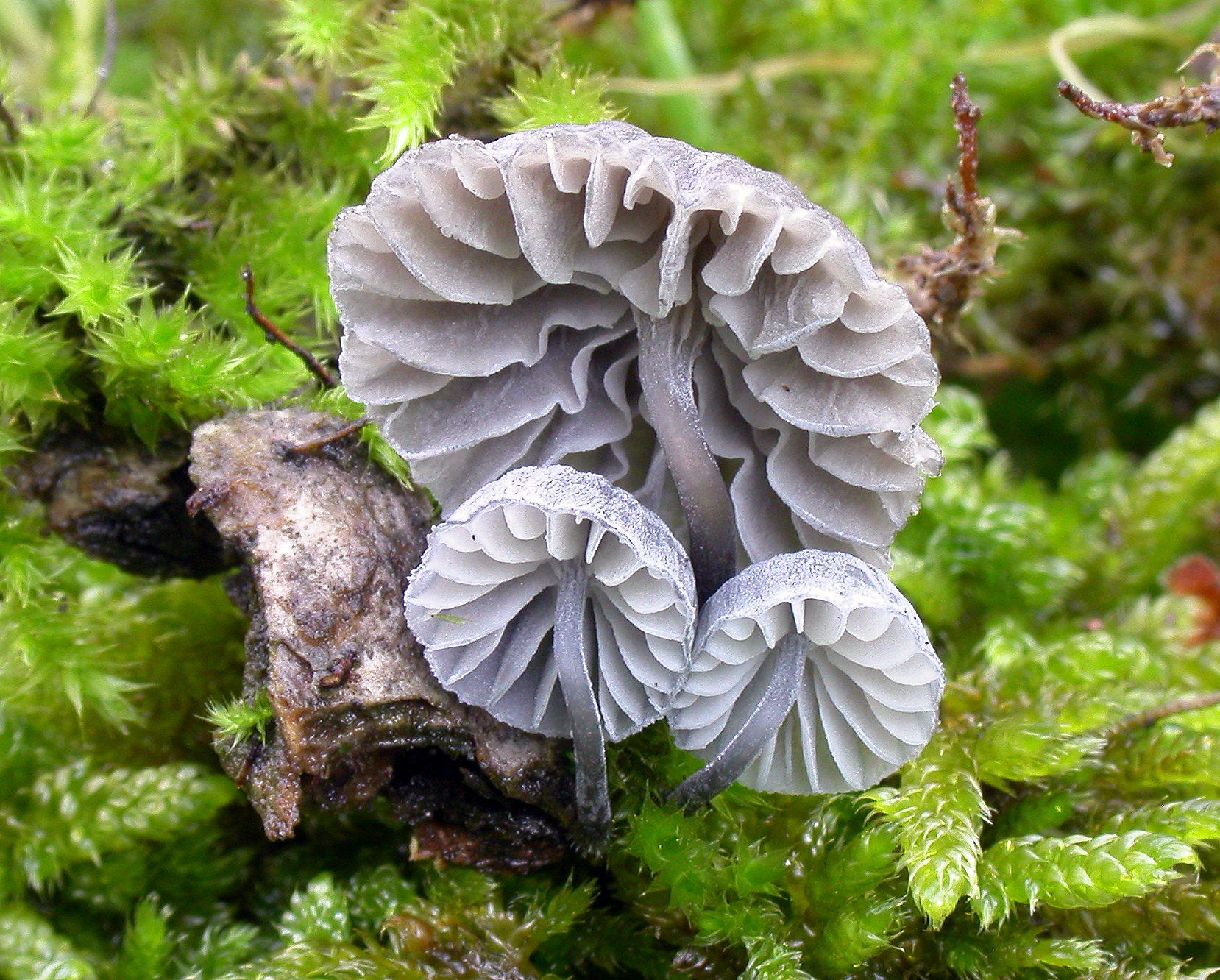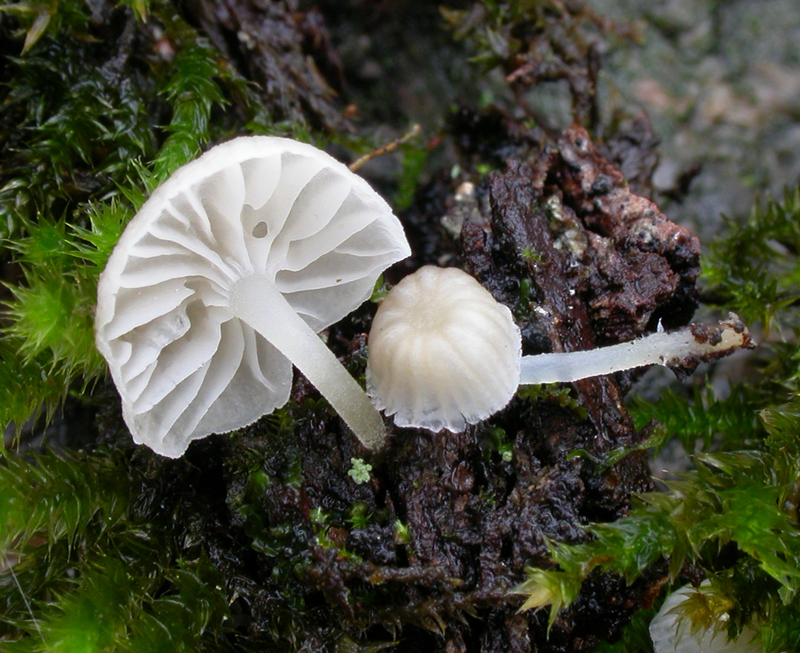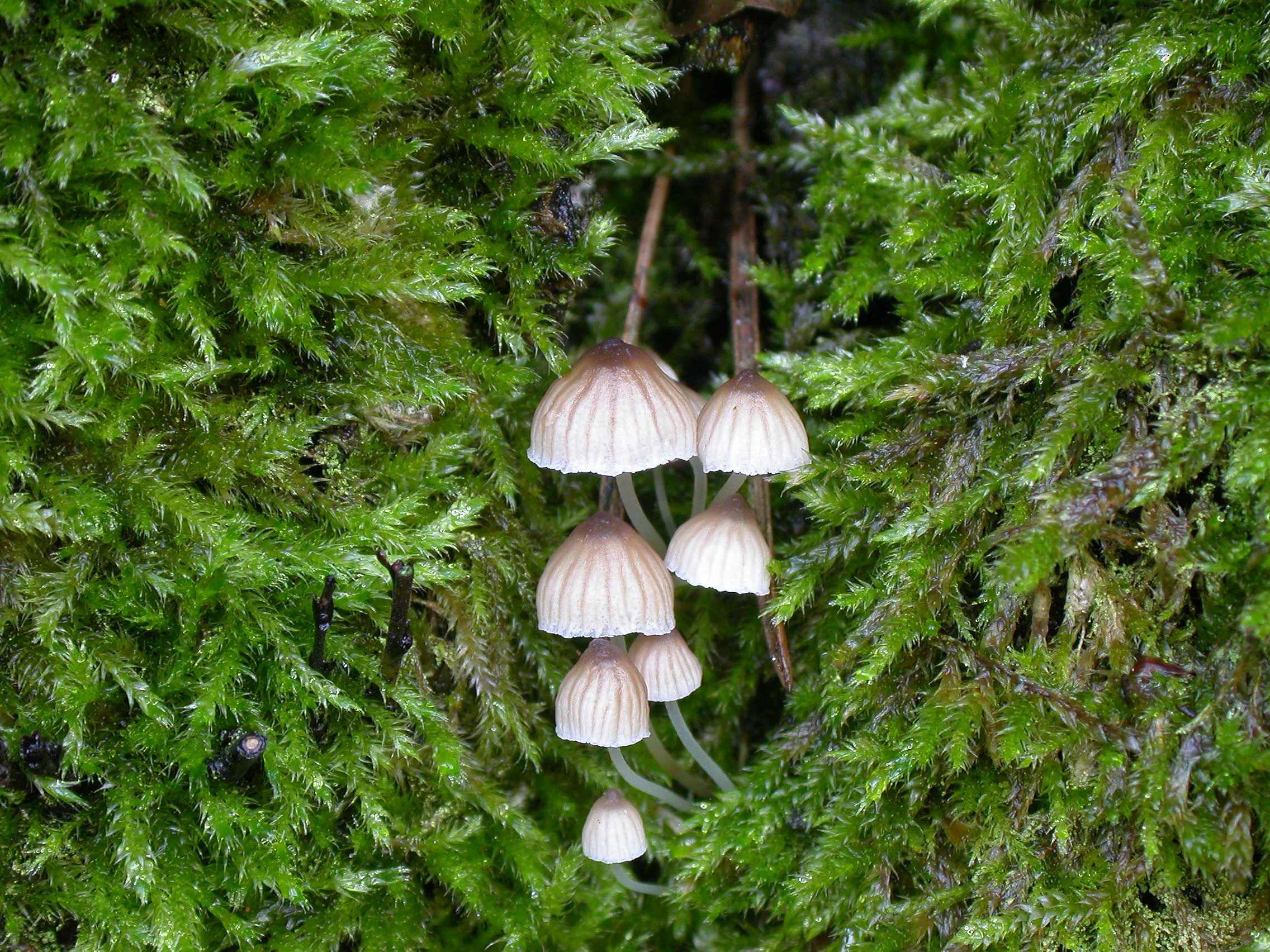Mycena supina
Mycena supina
Description
Hyphae of the pileipellis, cheilocystidia, caulocystidia, hypha of the cortical layer of the stem, basidium, and spores.
Cap 2-7 mm across, hemispherical, parabolical to convex, pruinose or minutely puberulous, glabrescent, sulcate, translucent-striate, at first sepia brown with dark sepia brown centre, becoming pale grey-brown more or less with a sepia brown centre and a paler, usually whitish, margin, with age turning pale whitish grey to dingy whitish, with or without a darker centre. Gills 11-17 reaching the stem, adnate to broadly adnate, decurrent with a tooth, grey brown to pale grey or greyish white, edge paler. Stem 7-15 x 0.5-1 mm, cylindrical, equal or somewhat widened at the base, minutely puberulous, glabrescent for the greater part, at first blackish brown, then pale grey-brown to dingy whitish, often whith a white apex and sepia brown base; towards the base densely covered with long, flexuous, white fibrils. Odour none. Basidia 25-35 x 10-12 µm, clavate, 4-spored, with sterigmata up to 6 µm long. Spores 7-9 x 6.5-9 µm, Qav ˜ 1.1, globose to subglobose, amyloid. Cheilocystidia 15-30 x 8-18.5 µm, occuring mixed with basidia, clavate, covered with not very numerous, evenly spaced, cylindrical excrescences 2-5 x 1 µm. Pleurocystidia absent. Lamellar trama dextrinoid. Hyphae of the pileipellis 2-7 µm wide, densely covered with cylindrical excrescences 1-2 µm long. Hyphae of the cortical layer of the stem 1.5-3 µm wide, smooth to sparsely covered with cylindrical excrescences 1-3 x 0.5-1 µm, terminal cells not numerous, 4-6 µm wide, clavate, covered with cylindrical excrescences. Clamps present in all tissues.
Ecology and distribution
On moss-covered trunks of deciduous trees, possibly mostly in rich, calcareous sites. Autumn to early winter. Very rare in Norway.





